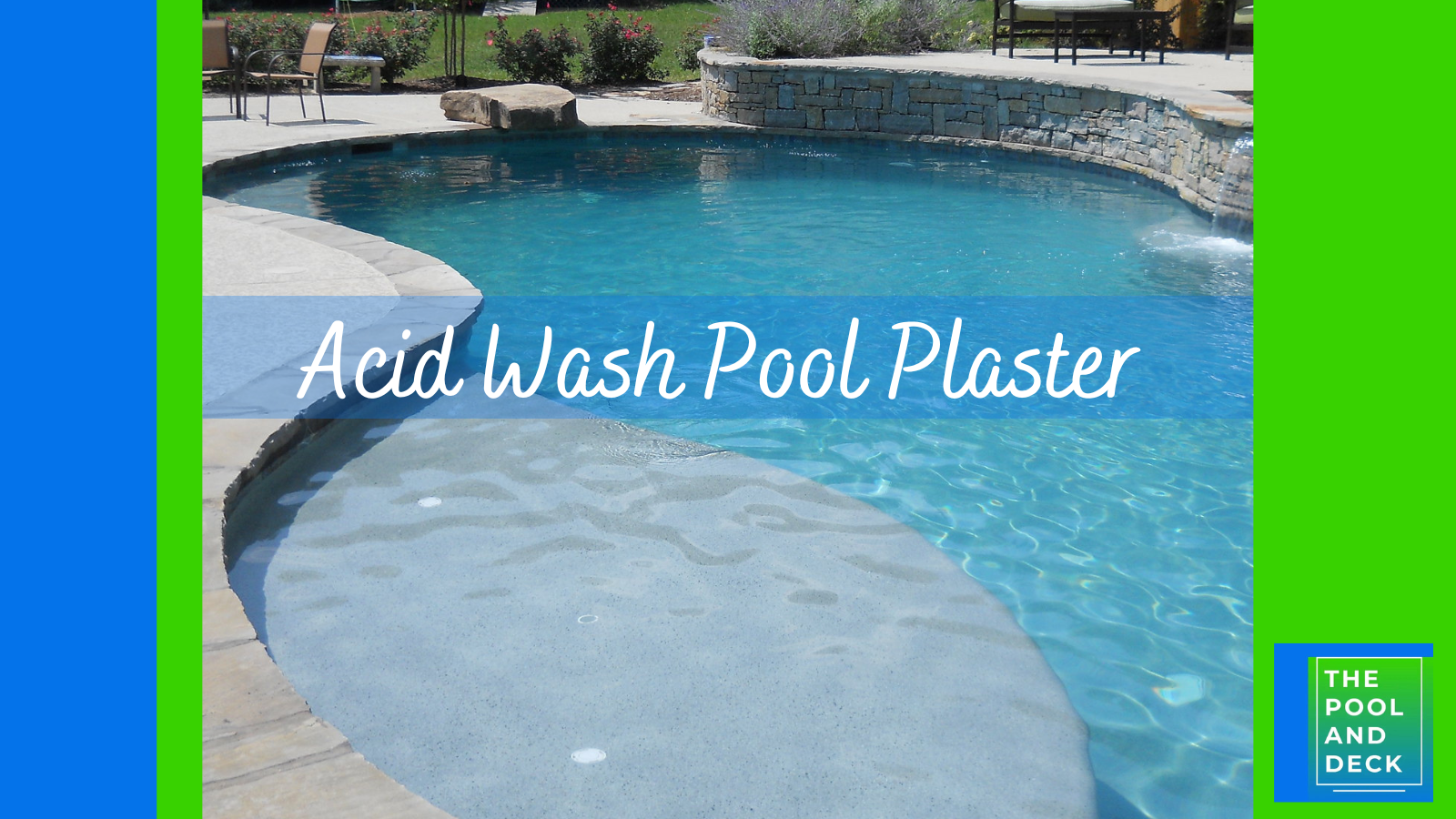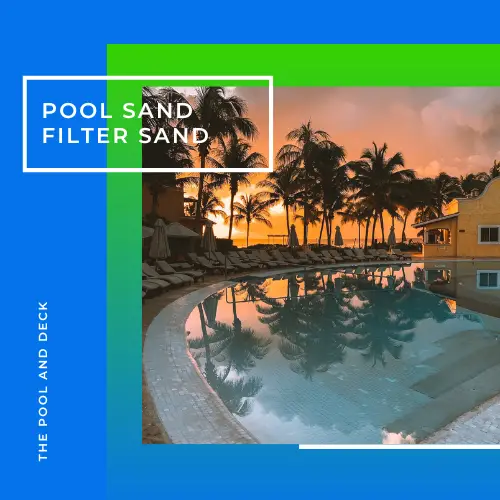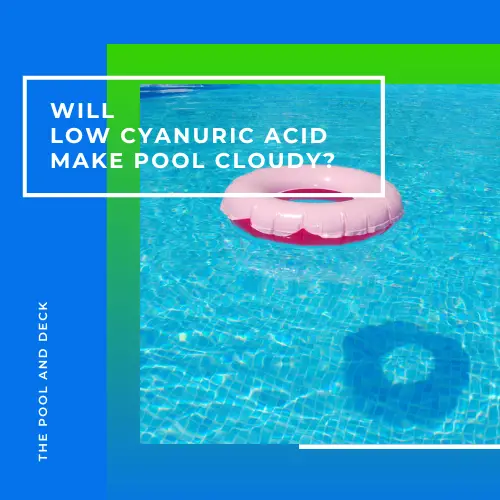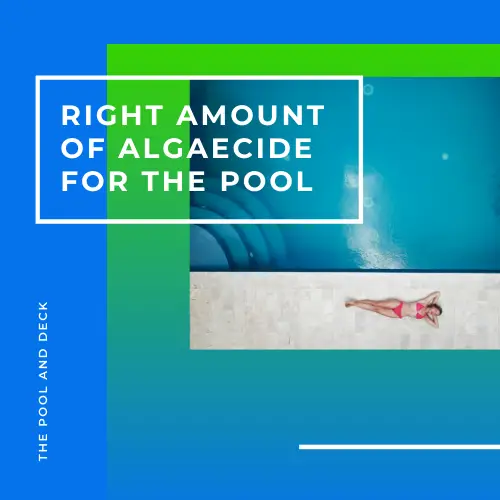How to Lower Total Alkalininty in a Pool the Easy Way
As an Amazon Associate, I earn from qualifying purchases.
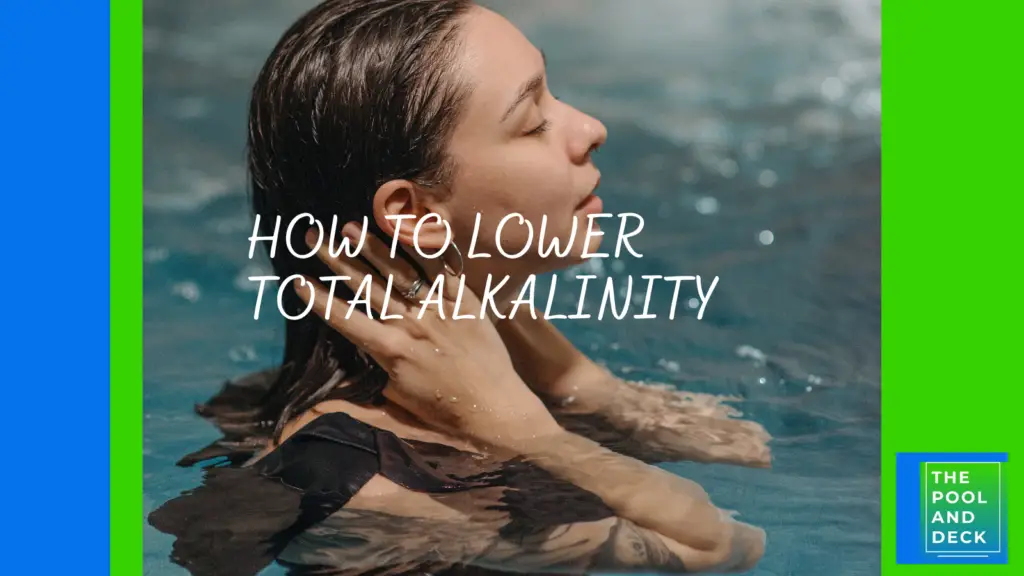
Knowing how to lower total alkalininty in a pool is extremely important for pool owners. Total Alkalinity (TA) plays a significant role in maintaining a balanced and enjoyable swimming environment.
Elevated total alkalinity can lead to a range of undesirable consequences, including cloudy water, skin and eye irritation, and damage to pool equipment.
Table of Contents
Recognizing Symptoms of High Total Alkalinity
Several telltale signs indicate elevated total alkalinity levels in pool water. Persistently cloudy water is a primary indicator. You will also notice increased skin and eye irritation among swimmers.
If the issue of pool alkalinity too high is left unattended over an extended period of time you will also start to see the formation of scale deposits on pool walls and fixtures. Worse, the scaling is also taking place in the plumbing, pump and filter.
So, not only does your pool look shabby, the pump and filter need to work a lot harder to maintain the filtration rate. The result is higher operating cost and reduced lifespan for the entire pool filtration system.
Why Lower High Total Alkalinity?
The recommended range for Total Alkalinity (TA) is 80 – 120 ppm, and a reading over 150 ppm is considered too high. You need to lower Total Alkalinity (TA) if it has exceeded 150 ppm because:
- High Total Alkalinity (TA) makes it very difficult to stabilize pH of the pool within the recommended range of 7.2 – 7.8. High pH reduces the effectiveness of chlorine as a sanitizer.
- Because High Total Alkalinity (TA) reduces chlorine effectiveness the pool water is more likely to harbor pathogens such as harmful bacteria and algae.
- High Total Alkalinity (TA) impacts the clarity of pool water and results in a murky appearance. Apart from making the pool water look unattractive, a cloudy pool poses a potential hazard by obscuring obstacles from swimmers.
- Moreover, persistent High Total Alkalinity (TA) will result in scaling of pool walls, floor, ladders, plumbing and filtration equipment
Fortunately, optimizing pool alkalinity is not that difficult. You can add baking soda or sodium bicarbonate to raise alkalinity levels, and use muriatic acid or sodium bisulfate to lower it.
Are both pH and TA high? Then check out pH and Alkalinity High in Pool? (Effect, Cause & Best Solution!)
How to Lower Total Alkalininty in a Pool
You can use muriatic acid or sodium bisulfate to lower Total Alkalinity (TA). Here’s how to lower total alkalininty in a pool.
Testing Pool Water: The First Step
You definitely need the actual Total Alkalinity (TA) reading before attempting to lower it. You should not be playing a guessing game. Remember, total alkalinity affects pH, so any reduction in TA will result in a reduction in pH too!
Actually you may need to do a few iterations before you get both TA and pH within the recommended range.
Pool testing strips or kits are readily available at pool supply stores or on Amazon. So get one, if you do not already have one.
Recommended Test Strips
JNW 7in1 Pool and Spa Test Strips
Simply dip the strip into the water for 2 seconds, hold strip horizontally for 30 seconds, and compare with the color chart on the bottle to obtain accurate water results in just seconds.
Recommended Chemical Test Kit
Taylor K-2005 Complete DPD 9-in-1 Test Kit
Tests for free & total chlorine, bromine, pH, total alkalinity, total hardness, and cyanuric acid (CYA) levels.
To lower total alkalinity you can use either muriatic acid or sodium bisulfate. Here’s how to use them.
Muriatic Acid: The Cheaper Option (But be Very Careful!)
Muriatic acid, a concentrated form of hydrochloric acid, is highly effective in lowering total alkalinity. However, due to its acidic nature, it necessitates careful handling and adherence to safety guidelines.
- Wear protective gear, including gloves, goggles, and a respirator, to prevent skin and respiratory irritation.
- Determine the required muriatic acid volume based on pool size and current alkalinity levels.
- Dilute muriatic acid according to manufacturer’s instructions.
- Pour the diluted solution directly into the pool’s deepest area.
- Run the pump for 5-6 hours.
- Test both TA and pH.
- Repeat if necessary
Muriatic Acid
Acid Blue Muriatic Acid by CPDI
Vapor Reduction Technology reduces up to 90% of harmful vapors compared to standard muriatic acid.
Sodium Bisulfate: A Safer Alternative (But More Expensive!)
Sodium bisulfate, also known as dry acid, offers a safer approach to lowering total alkalinity. It’s less corrosive than muriatic acid and easier to handle.
- Fill a bucket 3/4 full with water and add sodium bisulfate granules. Stir until the granules dissolve completely.
- Carefully pour the dissolved solution around the pool’s perimeter, starting with the deep end.
- Run the pump for 5-6 hours.
- Test both TA and pH.
- Repeat if necessary.
For Decreasing pH & TA
Lower and balance the pH & TA levels in your swimming pool water for
- Better pool water clarity
- Improved chlorine efficiency
- Preventing scale formation
- Preventing eye and skin irritation
Aeration: An Additional Approach (Limited Success!)
Aeration, the process of introducing air into pool water, can also contribute to lowering total alkalinity. This method involves using an air compressor or creating water movement with pool jets or a waterfall.
Gradual Adjustment: The Key to Success
Regardless of the chosen method, it’s essential to gradually adjust total alkalinity levels to avoid sudden chemical imbalances. Test pool water for both TA and pH and make minor adjustments as needed.
Thank you very much for reading the post. I do hope you found it informative and helpful.







